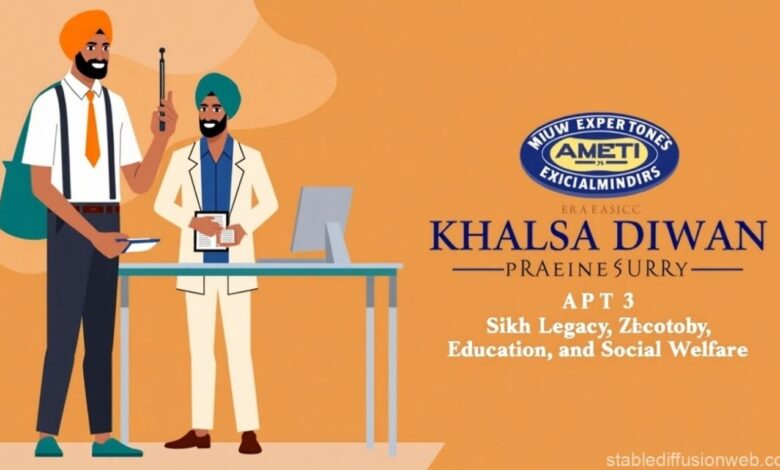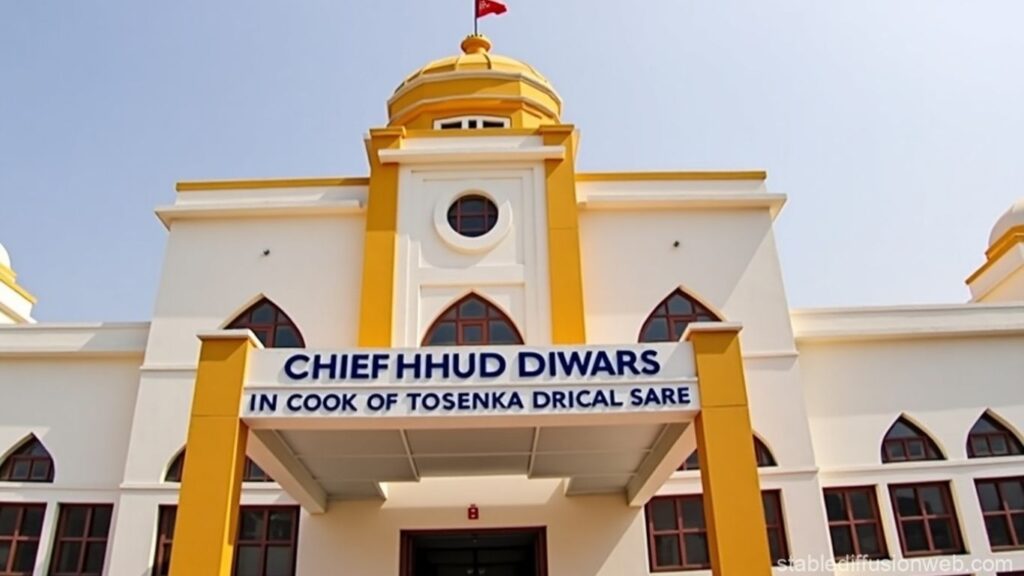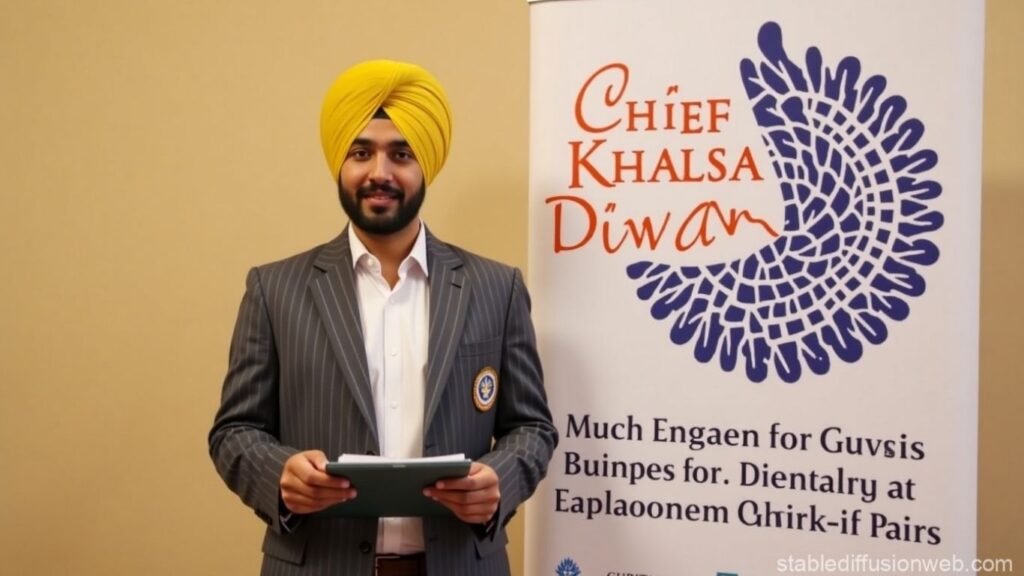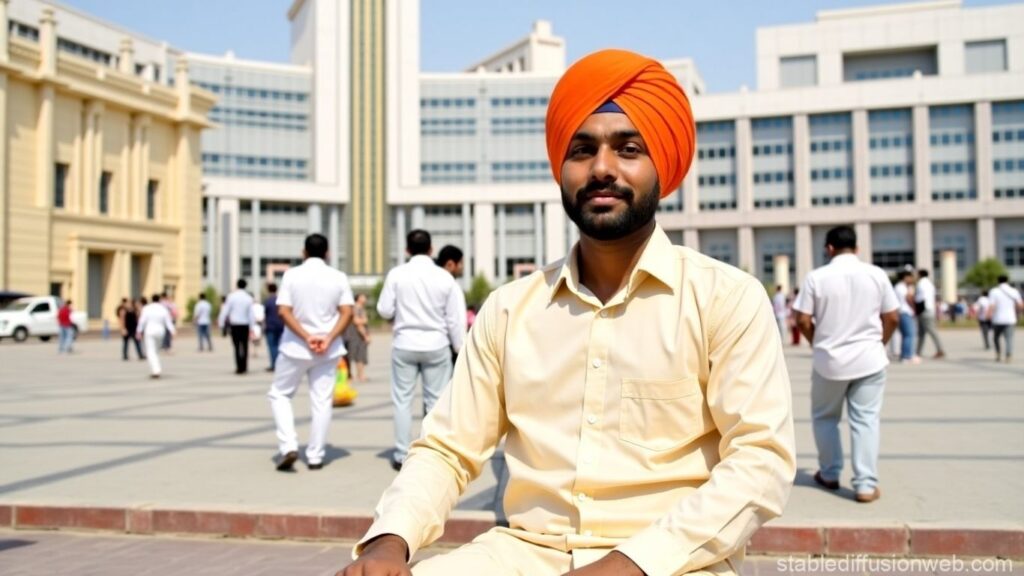Chief Khalsa Diwan: A Pillar of Sikh Legacy, Education, and Social Welfare

Introduction
Among the most respected institutions within the Sikh community, the Chief Khalsa Diwan (CKD) stands as a timeless symbol of religious leadership, educational advancement, and selfless service. Established in 1902 in Amritsar, CKD has played a pivotal role in shaping Sikh identity during colonial India and continues to impact lives through its vast network of schools, hospitals, and social welfare programs. With its legacy deeply rooted in the teachings of the Sikh Gurus, the Chief Khalsa Diwan bridges historical values with modern humanitarian efforts.
Its commitment to upholding Sikh principles while promoting inclusive development has earned CKD a prominent place in both religious and secular spheres. Through organized community service, academic empowerment, and cultural preservation, the institution continues to inspire generations of Sikhs and serve as a model of ethical governance and civic responsibility.
The Origins of Chief Khalsa Diwan

Founding and Historical Context
The Chief Khalsa Diwan was born out of a transformative era in Sikh history. The late 19th and early 20th centuries were marked by increasing political tension, religious reform, and cultural awakening among Indian communities under British colonial rule. Amidst these challenges, Sikh intellectuals and leaders felt the urgent need to form a unified platform to safeguard Sikh interests.
The CKD was established in 1902 as a representative organization for Sikhs, consolidating efforts made by earlier reformist movements such as the Singh Sabha Movement. Its early goals included protecting Sikh rights, promoting education, countering religious conversions, and addressing social issues like caste discrimination and illiteracy.
Who was the first president of Chief Khalsa Diwan?
The first president of Chief Khalsa Diwan was Bhai Vir Singh, a revered scholar, poet, and theologian. He is often credited with being one of the chief architects of modern Sikhism. Through his prolific literary work and spiritual insight, Bhai Vir Singh helped rekindle pride in Sikh identity and infused the community with a renewed sense of purpose.
Under his leadership, CKD began laying the groundwork for a structured, mission-driven organization focused on faith, education, and reform. His influence extended beyond administration, as he promoted a vision of holistic development through both religious and secular learning.
Educational and Social Contributions of Chief Khalsa Diwan
Establishment of Schools and Colleges
One of CKD’s most profound contributions lies in its vast educational outreach. It has established over 50 schools and colleges across Punjab and other parts of India. These include the well-known Sri Guru Harkrishan Public Schools, which offer quality modern education integrated with Sikh spiritual teachings and Punjabi language instruction.
The primary objective behind these institutions is to create academically strong and morally upright citizens. Alongside subjects like science, mathematics, and social studies, students are taught Gurbani, Sikh history, and values of humility, service, and discipline. This blend of modern and traditional education ensures that Sikh youth remain rooted in their identity while excelling in a globalized world.
Healthcare and Humanitarian Services
CKD has been a lifesaving force in the realm of public health. Through the establishment of hospitals, dispensaries, and regular medical camps, the organization extends affordable and often free healthcare services to underserved populations. These services are especially vital in rural and economically backward regions, where government resources may be scarce.
Facilities like the CKD Charitable Hospital in Amritsar offer a wide range of medical treatments, from general checkups to specialized care. Mobile clinics and eye camps are frequently organized in remote villages, embodying the Sikh principle of ‘Sarbat da Bhala’ (welfare of all). In times of crisis, like during pandemics or natural disasters, CKD volunteers are among the first to respond with medical aid, food, and shelter.
Women and Youth Empowerment
Understanding the vital role of women and youth in societal progress, CKD has undertaken numerous initiatives for their empowerment. Vocational training centers have been set up to help women gain skills in tailoring, computer literacy, and small business management. These programs foster financial independence and boost confidence among women from conservative or economically disadvantaged backgrounds.
Youth empowerment is another cornerstone of CKD’s social mission. The organization conducts leadership workshops, career counseling sessions, and religious camps aimed at nurturing responsible, educated, and value-driven future leaders. Special attention is paid to addressing youth issues such as drug abuse, unemployment, and cultural disconnection through positive engagement and mentorship.
Religious and Cultural Significance

Preserving Sikh Traditions
In an era of rapid globalization, Chief Khalsa Diwan plays a crucial role in preserving Sikh heritage and culture. It conducts Gurmat camps, where participants receive hands-on training in Sikh philosophy, history, and daily spiritual practices. These camps are particularly popular among children and youth who may be growing up in environments detached from traditional practices.
CKD also promotes the use of the Punjabi language in education and literature, ensuring its survival and relevance. Regular religious seminars, conferences, and interfaith dialogues help promote unity within the community and encourage respectful interaction with people of other faiths. The organization is also a key patron of Gurmat Sangeet, ensuring that the sacred music of the Sikh Gurus is taught and performed in its purest form.
What is a Diwan in Sikhism?
In Sikhism, a “Diwan” refers to a religious congregation or assembly, usually held in a Gurdwara or other communal setting. These gatherings involve Kirtan (devotional singing), Katha (exegesis of scriptures), and community discussions. Diwans are central to Sikh communal life, fostering spiritual growth, collective prayer, and moral discourse.
Through its organized Diwans, CKD not only reinforces religious teachings but also uses the platform to educate on current social issues, promote volunteerism, and celebrate important Sikh festivals. These gatherings play a vital role in keeping the community united and spiritually vibrant.
Historical Context and Sikh Identity

What is the history of Khalsa Diwan?
The history of Khalsa Diwan is closely tied to the broader narrative of Sikh reform and resilience. Created at a time when Sikhs faced political marginalization and religious dilution, Khalsa Diwan aimed to revive Sikh practices, protect identity, and promote unity. It provided an organized administrative structure that enabled Sikhs to collectively advocate for their rights under colonial rule.
Over time, CKD became an important voice in the Sikh renaissance, influencing not just religious practices but also social reform, education policies, and political representation.
Who is the founder of Khalsa?
The founder of the Khalsa is Guru Gobind Singh Ji, the tenth Guru of the Sikhs. On Vaisakhi of 1699, he initiated a revolutionary spiritual movement by establishing the Khalsa Panth—a brotherhood committed to defending righteousness, justice, and faith. The Khalsa was designed to uphold the core Sikh values of equality, bravery, and discipline, marking a turning point in Sikh history.
What is the story of the Khalsa?
The story of the Khalsa begins with Guru Gobind Singh Ji’s bold call for sacrifice. During a large congregation, he asked for five volunteers willing to give their lives for their faith. One by one, five brave men stepped forward. Instead of death, they were initiated into a new spiritual order through the Amrit Sanchar (baptism ceremony).
These Panj Pyare (Five Beloved Ones) became the nucleus of the Khalsa, symbolizing purity, fearlessness, and total devotion to God. Guru Gobind Singh Ji himself took Amrit from them, illustrating the profound equality and mutual respect inherent in Khalsa ideology.
What is the history of Diwan?
Historically, the term “Diwan” originated from Persian and referred to a royal court or council chamber. In Sikh tradition, it was adapted to mean a religious or administrative assembly, where decisions regarding the community’s welfare were made.
As Sikh institutions evolved, Diwans became spaces not just for spiritual discourse but also for social mobilization and leadership development. CKD institutionalized the concept, using Diwans as platforms to address educational goals, healthcare strategies, and community challenges.
FAQs about Sikh History and the Chief Khalsa Diwan
What is the symbol of the Khalsa?
The symbol of the Khalsa is the Khanda, which features a double-edged sword, a circular Chakkar, and two single-edged swords (Kirpans).
Who wrote Chaupai Sahib?
Chaupai Sahib was composed by Guru Gobind Singh Ji and is part of the Dasam Granth.
How old was Mata Jito when she married?
Mata Jito Ji was approximately 13 years old when she married Guru Gobind Singh Ji.
What happened to Mata Jito Ji?
Mata Jito Ji passed away after giving birth to the couple’s son, Jujhar Singh. She is honored for her spiritual strength and maternal sacrifices.
Who is Bibi Harsharan Kaur?
Bibi Harsharan Kaur was a young Sikh woman who cremated the bodies of Guru Gobind Singh Ji’s martyred sons. She was later killed by Mughal soldiers for her bravery.
Why is Bibi so famous?
Bibi Harsharan Kaur is revered for her courage, sacrifice, and spiritual devotion, especially in a time when few dared to uphold such honor.
Who is Bibi Sakina?
Bibi Sakina is a historical figure from Islamic history, often referenced for her suffering during the Battle of Karbala. She is not directly related to Sikh history but symbolizes feminine courage.
Who is the husband of Bibi Harsharan Kaur?
Historical records do not mention the husband of Bibi Harsharan Kaur, as her legacy is primarily associated with her act of bravery.
What is the name of 5 Pyare?
The Panj Pyare were:
- Bhai Daya Singh
- Bhai Dharam Singh
- Bhai Himmat Singh
- Bhai Mohkam Singh
- Bhai Sahib Singh
Who started Ardas?
The Ardas was formalized by Guru Gobind Singh Ji, incorporating earlier supplications offered by Guru Nanak Dev Ji.
Who wrote the Mool Mantar?
Guru Nanak Dev Ji, the first Sikh Guru, wrote the Mool Mantar.
Who wrote Sukhmani Sahib?
Guru Arjan Dev Ji, the fifth Sikh Guru, composed Sukhmani Sahib.
Who wrote the Japji Sahib?
Guru Nanak Dev Ji wrote the Japji Sahib.
Who wrote Dukh Bhanjani Sahib?
Dukh Bhanjani Sahib is a compilation from various verses in the Guru Granth Sahib, primarily by Guru Arjan Dev Ji.
Who wrote Kirtan Sohila?
Kirtan Sohila was composed by Guru Nanak Dev Ji, Guru Ram Das Ji, and Guru Arjan Dev Ji.
Who wrote Rehras Sahib?
Rehras Sahib is a compilation of hymns by multiple Gurus, including Guru Nanak Dev Ji, Guru Amar Das Ji, Guru Ram Das Ji, and Guru Arjan Dev Ji.
What is the power of Dukh Bhanjani Sahib?
Dukh Bhanjani Sahib is recited to relieve suffering and provide spiritual strength. Its verses are known for their healing vibrations and faith-boosting power.
Who wrote Anand Karaj?
Anand Karaj, the Sikh marriage ceremony, is based on the Laavan composed by Guru Ram Das Ji.
What is the Bibi Rajni tree?
The Bibi Rajni tree is associated with the miracle of a leper husband being cured by dipping into a pond near the tree. The location later became the site for Gurdwara Dukh Bhanjani Beri in Amritsar.
Who wrote Nitnem Sahib?
Nitnem Sahib includes compositions from the se
Who wrote Lavan Bani?
Guru Ram Das Ji wrote the Laavaan, which forms the core of the Sikh marriage ceremony.
Who wrote the Rehat Nama?
Multiple Rehatnamas were written by Sikhs close to the Gurus, including Bhai Nand Lal and Bhai Chaupa Singh.
Can a Sikh marry a Hindu?
Sikh Rehat Maryada recommends marriage within the Sikh faith through the Anand Karaj. Interfaith marriages occur but are subject to family and community views.
Who wrote Dasam Bani?
Dasam Bani is attributed to Guru Gobind Singh Ji and compiled in the Dasam Granth.
Who wrote Asa Di Vaar?
Guru Nanak Dev Ji and Guru Angad Dev Ji composed Asa Di Vaar.
Who wrote Guru Gobind Sahib?
If referring to Guru Gobind Singh Ji, he authored parts of the Dasam Granth. There is no separate text titled “Guru Gobind Sahib.”
Who created IK Onkar?
Guru Nanak Dev Ji introduced the concept and symbol of Ik Onkar, signifying one universal creator.
Who wrote Waheguru?
The word “Waheguru” was popularized in Sikh spiritual texts and meditations, though its origin is attributed to early Sikh Gurus and Bhatt poets.
Who was the final human Guru?
Guru Gobind Singh Ji was the tenth and final human Guru of the Sikhs. He bestowed the Guruship to the Guru Granth Sahib.
Which Guru married a child?
Historically, Guru Hargobind Sahib Ji married at a young age, which was customary at the time.
Who is Sahib Kaur?
Sahib Kaur was the daughter of Guru Gobind Singh Ji and Mata Sundari Ji. Some sources suggest she passed away in infancy.
Why did Guru Gobind Singh Ji get married thrice?
Guru Gobind Singh Ji had three wives due to sociopolitical customs of the era. All marriages were respected and dignified.
Who is the mother of the Sahibzade?
Mata Jito Ji and Mata Sundari Ji were mothers to the Sahibzade (sons of Guru Gobind Singh Ji).
How many sons are there of Mata Sundari Ji have?
Mata Sundari Ji had one son, Ajit Singh, with Guru Gobind Singh Ji.
Who is Zorawar Singh Palit?
Zorawar Singh, one of the younger Sahibzades, was martyred at a young age along with his brother Fateh Singh.
Who was the first Diwan?
The title of the first Diwan is traditionally given to Diwan Todar Mal, a noble who arranged the cremation of the Sahibzade.
Who is the leader of Dal Khalsa?
Dal Khalsa is a contemporary Sikh organization, and its leadership changes. Notably, HS Dhami has served as its president.
Who was the first Akali Chief Minister of Punjab?
Gopi Chand Bhargava was the first Chief Minister after independence, but Gurnam Singh was the first Akali CM of Punjab in 1967.
Conclusion
The Chief Khalsa Diwan is more than just a century-old institution; it is the living embodiment of Sikh resilience, reform, and service. From education and healthcare to cultural preservation, CKD continues to uphold the values that Guru Gobind Singh Ji and the Khalsa laid down centuries ago. As it adapts to the demands of modern society, Chief Khalsa Diwan remains an enduring symbol of unity, faith, and progress for Sikhs across the globe.
MORE ARTICLES Buzznewsdaily




